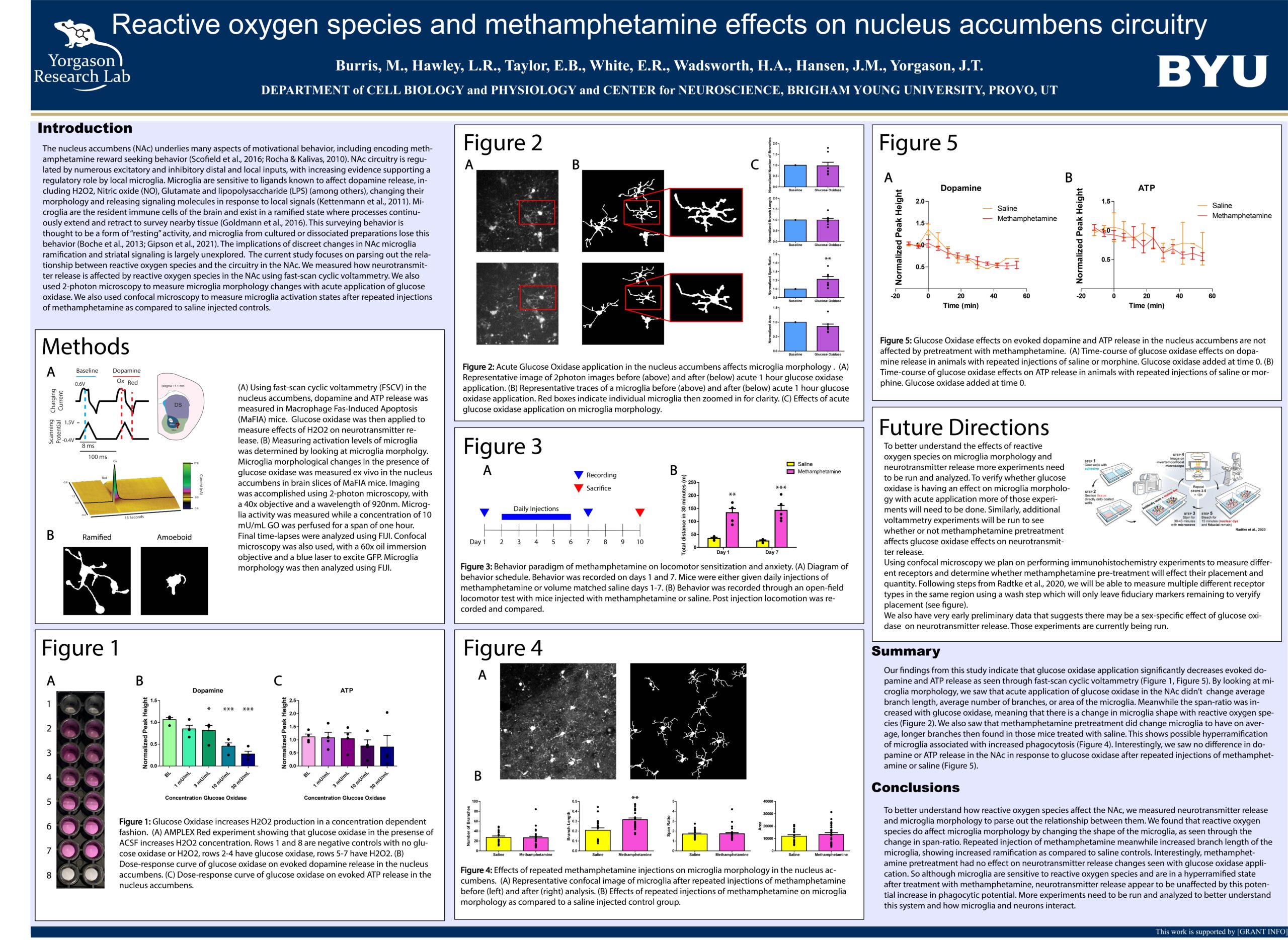Presenter Name: Matthew Burris
Description
The nucleus accumbens (NAc) underlies many aspects of motivational behavior, including encoding methamphetamine reward seeking behavior. NAc circuitry is regulated by numerous excitatory and inhibitory distal and local inputs, with increasing evidence supporting a regulatory role by local microglia. Microglia are the immune cells of the brain and microglia are sensitive to ligands known to affect dopamine release, including reactive oxygen species, Nitric oxide (NO), Glutamate and lipopolysaccharide (LPS) (among others). Microglia change their morphology in response to these signaling molecules which is indicative of microglia activation levels. Microglia are diverse across brain regions and how NAc microglia surveillance (i.e., ramification) relates to dopamine terminal activity and interactions with methamphetamine are unknown. The current project examines microglia morphology and dopamine terminal activity and the effects of reactive oxygen species and methamphetamine. Methamphetamine is known to increase reactive oxygen species, which play a role in neurotransmitter release in the NAc. In order to investigate methamphetamine and reactive oxygen species effects on this circuit we took mice and followed a behavioral protocol known to cause methamphetamine locomotor sensitization. We also used a control group which were only given saline. These two groups were then used to measure inherent microglia morphology changes due to repeated methamphetamine injections. Additionally, these mice were used to look at responsivity of dopamine terminals to reactive oxygen species through dopamine and ATP release measured by fast scan cyclic voltammetry. We also looked at morphology changes of microglia from acute application of glucose oxidase, which is known to increase reactive oxygen species. Through investigations of this circuit, we can better understand how reactive oxygen species and methamphetamine affect dopamine terminals as well as microglia activity.
University / Institution: Brigham Young University
Type: Poster
Format: In Person
Presentation #D54
SESSION D (3:30-5:00PM)
Area of Research: Science & Technology
Email: bmsburris@gmail.com
Faculty Mentor: Jordan Yorgason

